Modern Materialistic theories in study of life science speculate that our thoughts and feelings are outcome of atomic activities in brain, end product of chains of physical causation rooted in atomic motion, electrical impulses somehow shaped by the human nervous system into coherent patterns and so on. Under this limited framework it is difficult to address the real nature of life. This framework insists on direct observation of nature and thus denies any understanding through abstract philosophical reasoning. It is only an attempt to imitate a childish mentality that is prevalent in modern science, where scientists try to know everything within their empirically based methodologies. Following this attitude modern science only gave importance to the external appearance of reality. But now Scientists should force them to accept the limits of such a naive approach towards understanding the reality. Until and unless we come out of this puerile way of knowing things, we cannot understand properly the deeper aspects of reality of life science, mind (manasā), intelligence (buddhi) and false ego (ahańkāra), consciousness (cit), soul (ātman) and God (Bhagavān) etc.
So, to reallocate out from the darkness of this so-called scientific approach of knowing things we should bathe our intellect with vedic wisdom and take Shelter of vedic knowledge. In fact, vedic Scriptures have such a great treasury of information in the field of life science hidden in sanskrit verses that, it could bring revolution in modern approach of understanding in this subject matter. We may stand astonished that how could the sages achieve such a vast and microscopic knowledge?
Actually life science was fully studied, so the sages knew about the chromosomes which were termed as ‘Gunavidhi’. Even the chromosome number 23, specific for human beings is recorded, in the Mahabharata and the Srimad Bhagavatam. It is also stated that these principles give rise to genetic diseases. A list of genetic diseases is given in the Mahabharata, which is similar to the list in the modern science. Then the zygote, which is termed as ‘Kalala’, goes on dividing once, ten times, three times. It means that the cell divides once to give rise to two cells. This happens ten times so that two raised to the power of ten cells form. This happens thrice, at three layers namely Endoderm, Mesoderm and Ectoderm. This multiplication produces two raised to the power of thirty cells, which are really present in a new born baby, according to the modern science.
All the stages of growth of an embryo are given in the Srimad Bhagavatam and Aitareya Upanishad commencing from the first day up to the full term. These stages concur with those proved by modern science, and sometimes supersede the modern science. Srimad Bhagavatam records that heart of a foetus begins its work in the second month of pregnancy. This fact was unknown to the modern science till December 1972. Medical science presumed till then, that the foetal heart began in the fifth month of pregnancy, but then with the use of Di-sonar apparatus it was confirmed that the foetal heart begins in the second month of pregnancy. This is now well known due to ultrasonography.
The Aitareya Upanishad (1-1-4) states how the organs develop in the foetus. It says that first the mouth comes into existence, then the nostrils, then eyes, then ears, then heart, Nabhi i.e. navel, then the penis. The same order of development is given in the Srimad Bhagavatam. It is surprising that the same order is discovered by the modern science, recently.
The Srimad Bhagavatam (3/31) narrates how the embryo develops. It states that after 5 days a Budbuda appears. Modern embryology calls this as ‘Bubble stage’ Bubble means Budbuda. On 10th day ‘Karkandhu’ is formed, says Srimad Bhagavatam. ‘Karkandhu’ means a fruit ‘jujube’ or ‘zizyphus’. Embryology calls it a spherical mass of cells. On the 15th day an egg is formed, says Srimad Bhagavatam. Embryology accepts it by describing that stage as having oval shape.
The Srimad Bhagavatam (3/31/3) states that the head of the foetus is formed at the end of the first month.
mäsena tu çiro dväbhyäà bähv-aìghry-ädy-aìga-vigrahaù nakha-lomästhi-carmäëi liìga-cchidrodbhavas tribhiù
In the course of a month, a head is formed, and at the end of two months the hands, feet and other limbs take shape. By the end of three months, the nails, fingers, toes, body hair, bones and skin appear, as do the organ of generation and the other apertures in the body, namely the eyes, nostrils, ears, mouth and anus.
This appears true in the light of the modern investigations in embryology. The Srimad Bhagavatam gives further information that as soon as the nostrils develop there appears Prana and vocal chords also develop. Modern science has the same opinion.
The Srimad Bhagavatam clearly tells that foetal heart begins working in the second month of pregnancy. It is quite shocking to learn that till 1972 modern medical science advocated that the foetal heart begins in the fifth month of pregnancy. However, during December 1972, the news flashed in the Medical times that Dr. Robertson, Queen Mother’s hospital, Glasgow, England, used disonar apparatus to tap the heart sounds of the foetus and he discovered that the foetal heart begins working during 7th and 8th weeks of pregnancy. 8th week means the second month.
Now we will go through sloka by sloka as mentioned in srimad bhagavatam (3.31.1 to 3.31.24) about the fornmation and development of a body in the womb of a woman.
çré-bhagavän uväca
karmaëä daiva-netreëa jantur dehopapattaye
striyäù praviñöa udaraà puàso retaù-kaëäçrayaù
The Personality of Godhead said: Under the supervision of the Supreme Lord and according to the result of his work, the living entity, the soul, is made to enter into the womb of a woman through the particle of male semen to assume a particular type of body.
kalalaà tv eka-rätreëa païca-rätreëa budbudam
daçähena tu karkandhüù peçy aëòaà vä tataù param
On the first night, the sperm and ovum mix, and on the fifth night the mixture ferments into a bubble. On the tenth night it develops into a form like a plum, and after that, it gradually turns into a lump of flesh or an egg, as the case may be.
mäsena tu çiro dväbhyäà bähv-aìghry-ädy-aìga-vigrahaù
nakha-lomästhi-carmäëi liìga-cchidrodbhavas tribhiù
In the course of a month, a head is formed, and at the end of two months the hands, feet and other limbs take shape. By the end of three months, the nails, fingers, toes, body hair, bones and skin appear, as do the organ of generation and the other apertures in the body, namely the eyes, nostrils, ears, mouth and anus.
caturbhir dhätavaù sapta païcabhiù kñut-tåò-udbhavaù
ñaòbhir jaräyuëä vétaù kukñau bhrämyati dakñiëe
Within four months from the date of conception, the seven essential ingredients of the body, namely chyle, blood, flesh, fat, bone, marrow and semen, come into existence. At the end of five months, hunger and thirst make themselves felt, and at the end of six months, the fetus, enclosed by the amnion, begins to move on the right side of the abdomen.
mätur jagdhänna-pänädyair edhad-dhätur asammate
çete vië-mütrayor garte sa jantur jantu-sambhave
Deriving its nutrition from the food and drink taken by the mother, the fetus grows and remains in that abominable residence of stools and urine, which is the breeding place of all kinds of worms.
kåmibhiù kñata-sarväìgaù saukumäryät pratikñaëam
mürcchäm äpnoty uru-kleças tatratyaiù kñudhitair muhuù
Bitten again and again all over the body by the hungry worms in the abdomen itself, the child suffers terrible agony because of his tenderness. He thus becomes unconscious moment after moment because of the terrible condition.
kaöu-tékñëoñëa-lavaëa- rükñämlädibhir ulbaëaiù
mätå-bhuktair upaspåñöaù sarväìgotthita-Vedanaù
Owing to the mother’s eating bitter, pungent foodstuffs, or food which is too salty or too sour, the body of the child incessantly suffers pains which are almost intolerable.
ulbena saàvåtas tasminn antraiç ca bahir ävåtaù
äste kåtvä çiraù kukñau bhugna-påñöha-çirodharaù
Placed within the amnion and covered outside by the intestines, the child remains lying on one side of the abdomen, his head turned towards his belly and his back and neck arched like a bow.
akalpaù sväìga-ceñöäyäà çakunta iva païjare
tatra labdha-småtir daivät karma janma-çatodbhavam
smaran dérgham anucchväsaà çarma kià näma vindate
The child thus remains just like a bird in a cage, without freedom of movement. At that time, if the child is fortunate, he can remember all the troubles of his past one hundred births, and he grieves wretchedly. What is the possibility of peace of mind in that condition?
ärabhya saptamän mäsäl labdha-bodho ‘pi vepitaù
naikaträste süti-vätair viñöhä-bhür iva sodaraù
Thus endowed with the development of consciousness from the seventh month after his conception, the child is tossed downward by the airs that press the embryo during the weeks preceding delivery. Like the worms born of the same filthy abdominal cavity, he cannot remain in one place.
näthamäna åñir bhétaù sapta-vadhriù kåtäïjaliù
stuvéta taà viklavayä väcä yenodare ‘rpitaù
The living entity in this frightful condition of life, bound by seven layers of material ingredients, prays with folded hands, appealing to the Lord, who has put him in that condition.
kapila uväca
evaà kåta-matir garbhe daça-mäsyaù stuvann åñiù
sadyaù kñipaty aväcénaà prasütyai süti-märutaù
Lord Kapila continued: The ten-month-old living entity has these desires even while in the womb. But while he thus extols the Lord, the wind that helps parturition propels him forth with his face turned downward so that he may be born.
tenävasåñöaù sahasä kåtväväk çira äturaù
viniñkrämati kåcchreëa nirucchväso hata-småtiù
Pushed downward all of a sudden by the wind, the child comes out with great trouble, head downward, breathless and deprived of memory due to severe agony.
patito bhuvy asåì-miçraù viñöhä-bhür iva ceñöate
rorüyati gate jïäne viparétäà gatià gataù
The child thus falls on the ground, smeared with stool and blood, and plays just like a worm germinated from the stool. He loses his superior knowledge and cries under the spell of mäyä.
From the very beginning of entering into the womb via semen of male to the cries of a newly born baby is fully described in above quoted slokas of Srimad bhagavad mahapuranam. Here Srimad Bhagavatam tells that first the penis is developed, then the anus, which modern science also discovered recently. The Srimad Bhagavatam (3/26/55) as well as the Aitareya Upanishad (1/1/4 ; 1/2/4) tell that the ears developed, in them the hearing sense appeared and the directions are born by the ears.
ghräëäd väyur abhidyetäm akñiëé cakñur etayoù tasmät süryo nyabhidyetäà karëau çrotraà tato diçaù Srimad Bhagavatam (3/26/55)
In the wake of the olfactory sense came the wind-god, who presides over that sense. Thereafter a pair of eyes appeared in the universal form, and in them the sense of sight. In the wake of this sense came the sun-god, who presides over it. Next there appeared in Him a pair of ears, and in them the auditory sense and in its wake the Dig-devatäs, or the deities who preside over the directions. (This sloka reffers to the appearance of different bodily parts of the Lord’s universal form and the appearance of the presiding deities of those bodily parts is being described. As in the womb of a mother a child gradually grows different bodily parts, so in the universal womb the universal form of the Lord gives rise to the creation of various paraphernalia.) Apparantly the statement appears ridiculous if you think that the directions are east, west, north, south etc. Such directions have no relation with the ears. However, here the directions are personal e.g. in front, at back, to the right or left, up or down. These six directions are original, personal and they are sensed by the ears. The Srimad Bhagavatam is and the Aitareya Upanisadh both exist since thousands of years BC. But the statements recorded in them are found true by the modern science during 1935 AD when Ross and Tait wrote an essay showing that the Labyrinth or the vestibular apparatus situated in the internal ear recognise the directions. He discovered that there are three semi-circular canals in the internal ear which are at right angles to each other and which are filled with lymph. As our head tilts towards left, the pressure in the canal in the left side increases giving a signal to the brain, which concludes that the head is tilted to the left side. Is it not miraculous that the discovery of 1935 is recorded in scriptures, thousands of years old? It proves that the medical science was well advanced during the ancient vedic era.
While describing when the organs and their functions come into being, the Aitareya Upanishad (1/1/4; 1/2/4) states that when Nabhi came into being, there appeared Apana Vayu and from Apana the Death appeared. If we think deeply then we have no other option then to accept this fact because Nabhi or navel is a part of abdomen. It comes into existence during the second month of pregnancy. Thus it seems that the death also comes into existence during second month of pregnancy. Up to the second month all the cells are multiplying rapidly. When one cell divides into two, we cannot say that the first cell died. Up to the second month each and every cell exists independently. It takes nourishment, oxygen and all other requirements for living by itself. For that purpose it does not depend on anything else. It divides and re-divides to form many cells. There is no death to these cells. But in the second month, the Nabhi appears and begins functioning. The function of Nabhi i.e. Umbilical chord is to supply nourishment, oxygen etc to all the parts of the developing body. This Nabhi means the Connecting Stalk of the modern embryology. The connecting stalk takes all the requirements from the mother and supply to the growing parts. From this time onwards all the cells become dependent on the connecting stalk for their requirements to live. If the connecting stalk does not supply properly, they are bound to die. Thus the death begins working since the second month of pregnancy. When the connecting stalk begins its work, there appears differentiation of the cells and particular cells develop a particular tissue. Such cells cannot live independently. Due to this dependence, death appears. So it is true that the death appears from second month of pregnancy onwards.
If we simply believe our so called scientific methodologies or in fact a puerile way of knowing things we cannot understand properly the deeper aspects of reality of life science, instead if we take solid philosophical, scientific and fully trusted vedic scripctural reference from authorized-unbroken Deciplic succession we can have access to much more than what we see now as a reality. Because we are bounded with imperfect senses which never can revel ultimate reality, being limited and conditioned and to get the glimpse of reality it is impossible for us without the will of that absolute truth – Sri Krishna. Furthermore,
para-cchandaà na viduñä puñyamäëo janena saù
anabhipretam äpannaù pratyäkhyätum anéçvaraù
After coming out of the abdomen, the child is given to the care of persons who are unable to understand what he wants, and thus he is nursed by such persons. Unable to refuse whatever is given to him, he falls into undesirable circumstances.
çäyito ‘çuci-paryaìke jantuù sVedaja-düñite
neçaù kaëòüyane ‘ìgänäm äsanotthäna-ceñöane
Laid down on a foul bed infested with sweat and germs, the poor child is incapable of scratching his body to get relief from his itching sensation to say nothing of sitting up, standing or even moving.
tudanty äma-tvacaà daàçä maçakä matkuëädayaù
rudantaà vigata-jïänaà kåmayaù kåmikaà yathä
In his helpless condition, gnats, mosquitoes, bugs and other germs bite the baby, whose skin is tender, just as smaller worms bite a big worm. The child, deprived of his wisdom, cries bitterly.
ity evaà çaiçavaà bhuktvä duùkhaà paugaëòam eva ca
alabdhäbhépsito ‘jïänäd iddha-manyuù çucärpitaù
In this way, the child passes through his childhood, suffering different kinds of distress, and attains boyhood. In boyhood also he suffers pain over desires to get things he can never achieve. And thus, due to ignorance, he becomes angry and sorry.
saha dehena mänena vardhamänena manyunä
karoti vigrahaà kämé kämiñv antäya cätmanaù
With the growth of the body, the living entity, in order to vanquish his soul, increases his false prestige and anger and thereby creates enmity towards similarly lusty people.
bhütaiù païcabhir ärabdhe dehe dehy abudho ‘sakåt
ahaà mamety asad-grähaù karoti kumatir matim
By such ignorance the living entity accepts the material body, which is made of five elements, as himself. With this misunderstanding, he accepts nonpermanent things as his own and increases his ignorance in the darkest region.
tad-arthaà kurute karma yad-baddho yäti saàsåtim
yo ‘nuyäti dadat kleçam avidyä-karma-bandhanaù
For the sake of the body, which is a source of constant trouble to him and which follows him because he is bound by ties of ignorance and fruitive activities, he performs various actions which cause him to be subjected to repeated birth and death.
Real science begins from here, How to grt rid of this helish condition of repeated Birth and Death?, which for modern science is not yet the subject of research even because their Study is currently somewhere stucked inside the womb and it takes time to born-grow-understand and conclude the biggest research and study is not to find out how we grow in womb but real learning is to find out the way to skip the WOMB.
Hare Krishna.
From the Book “Origin of Science”.
Views: 60

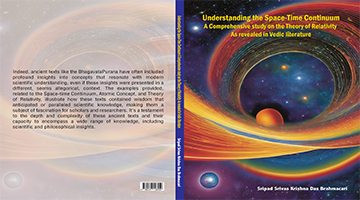
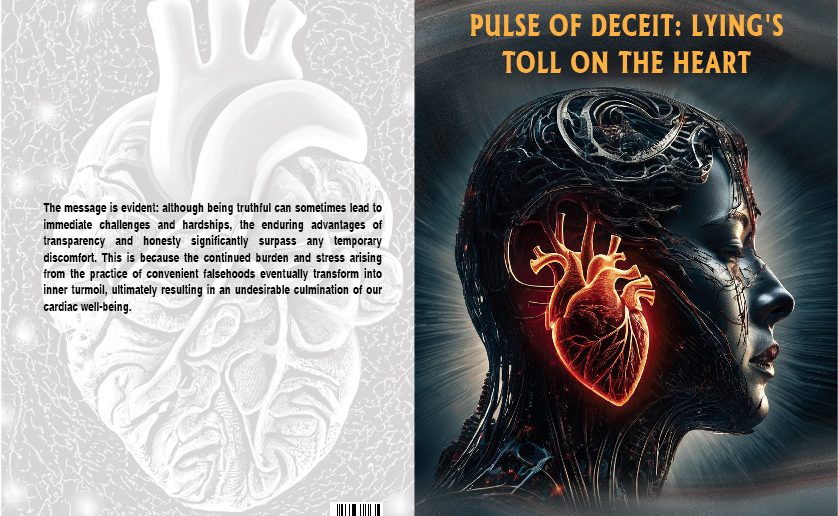
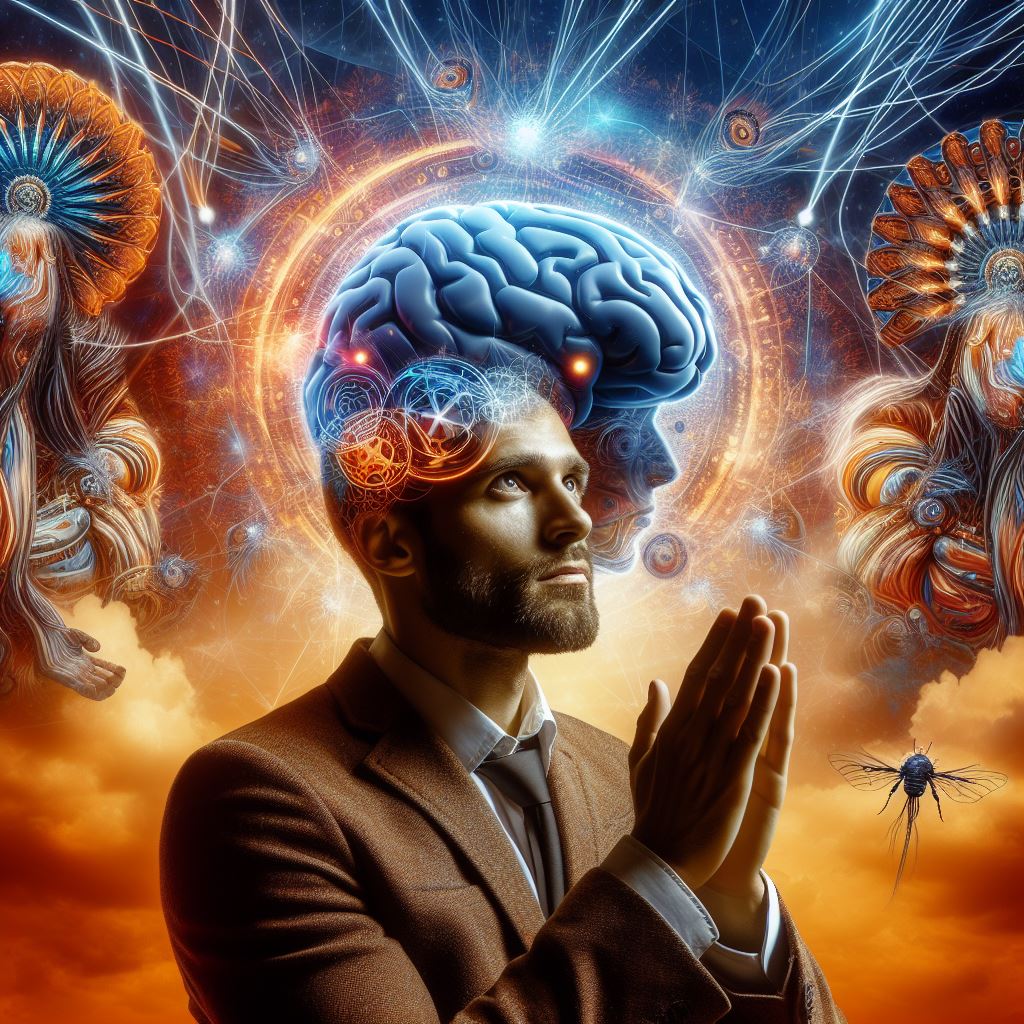
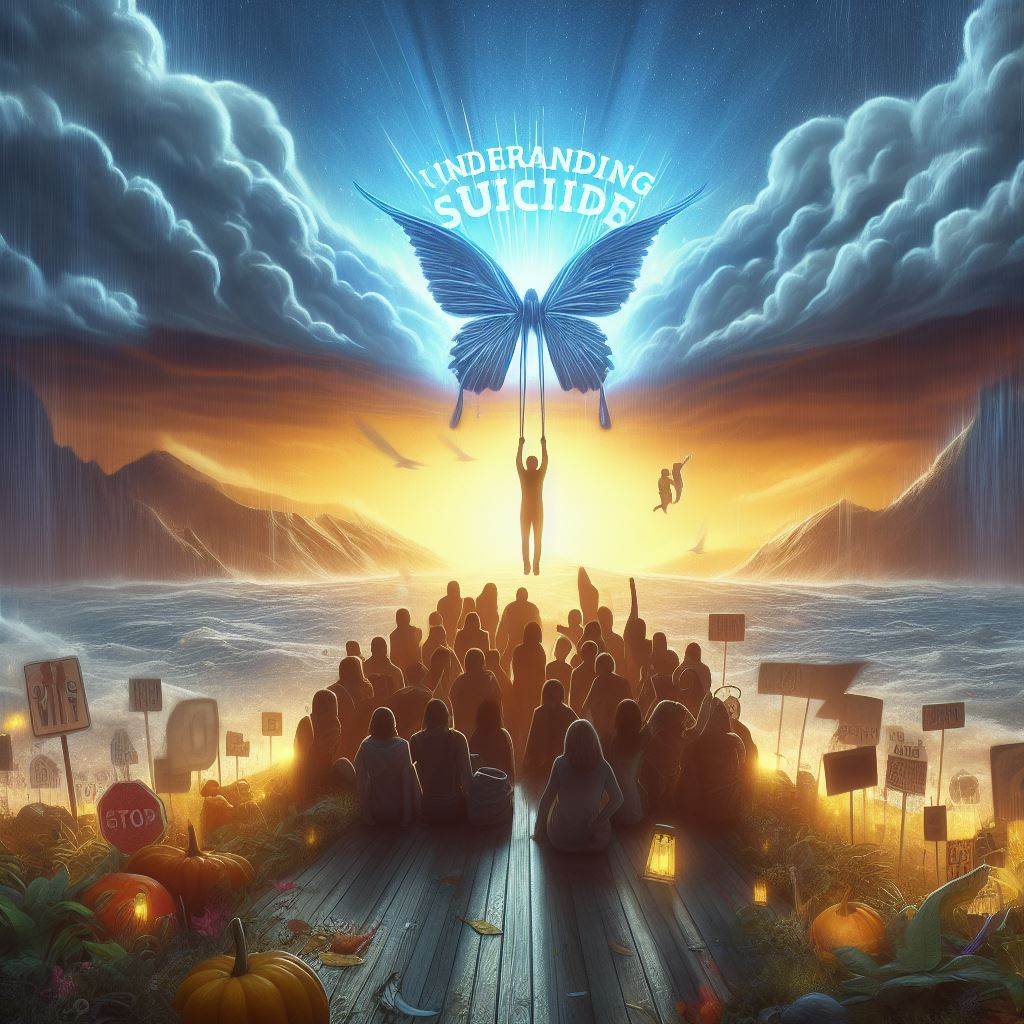









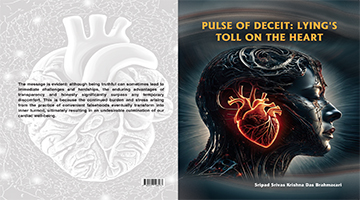
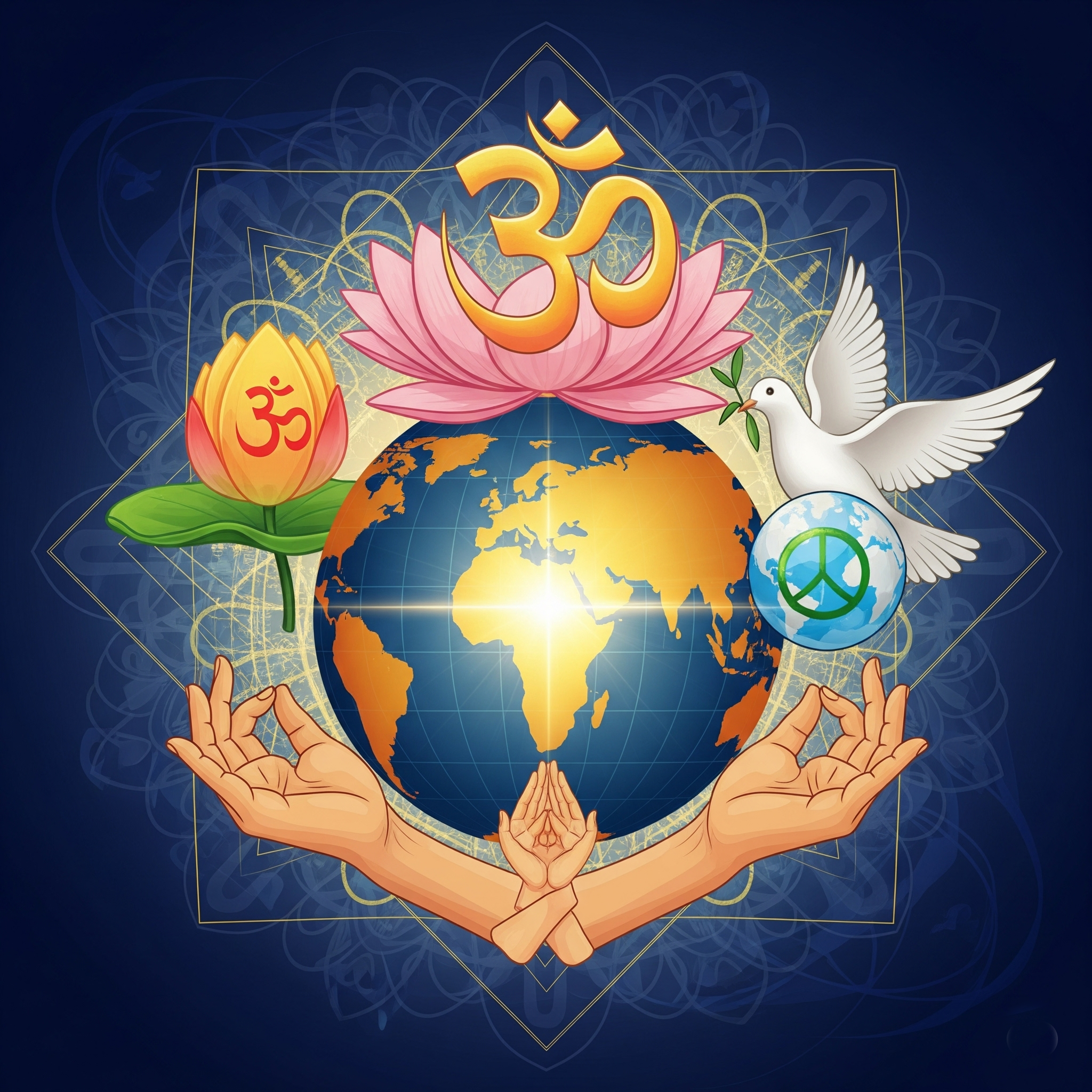


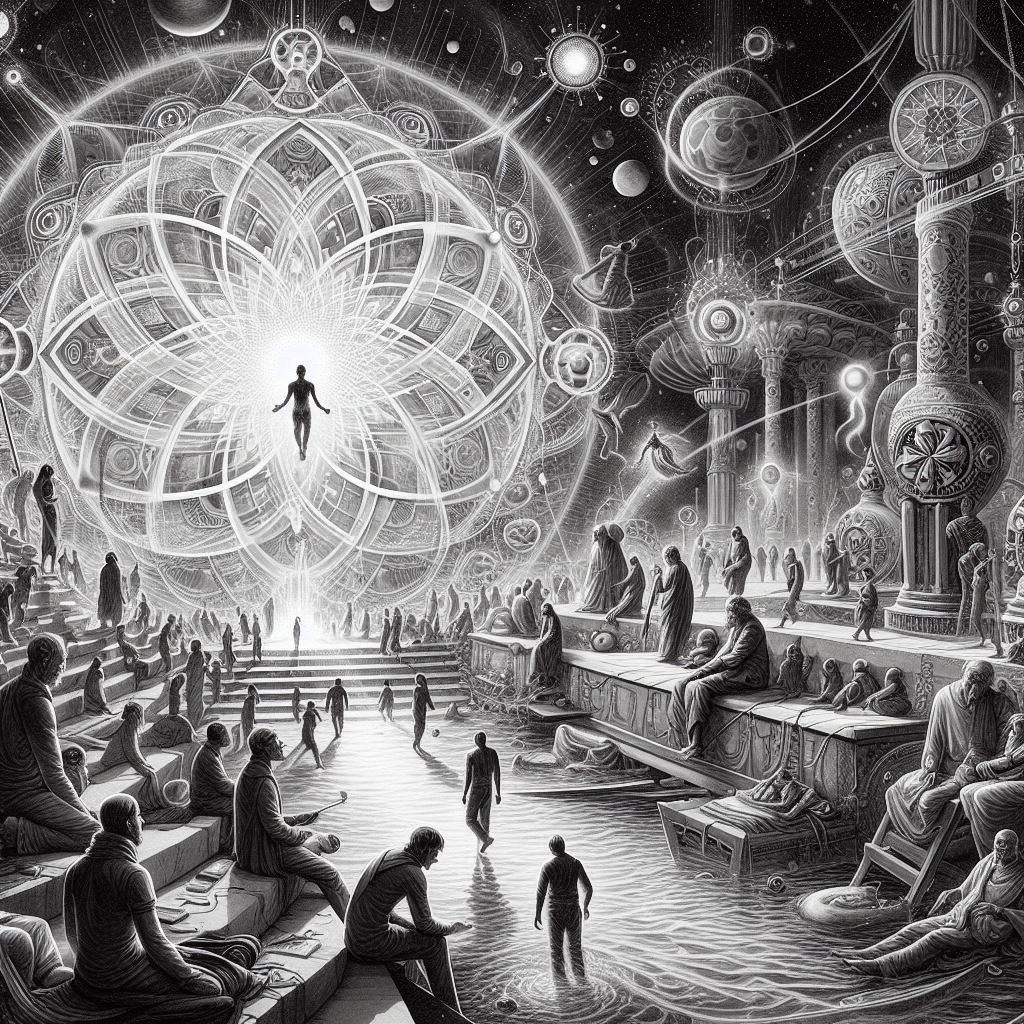
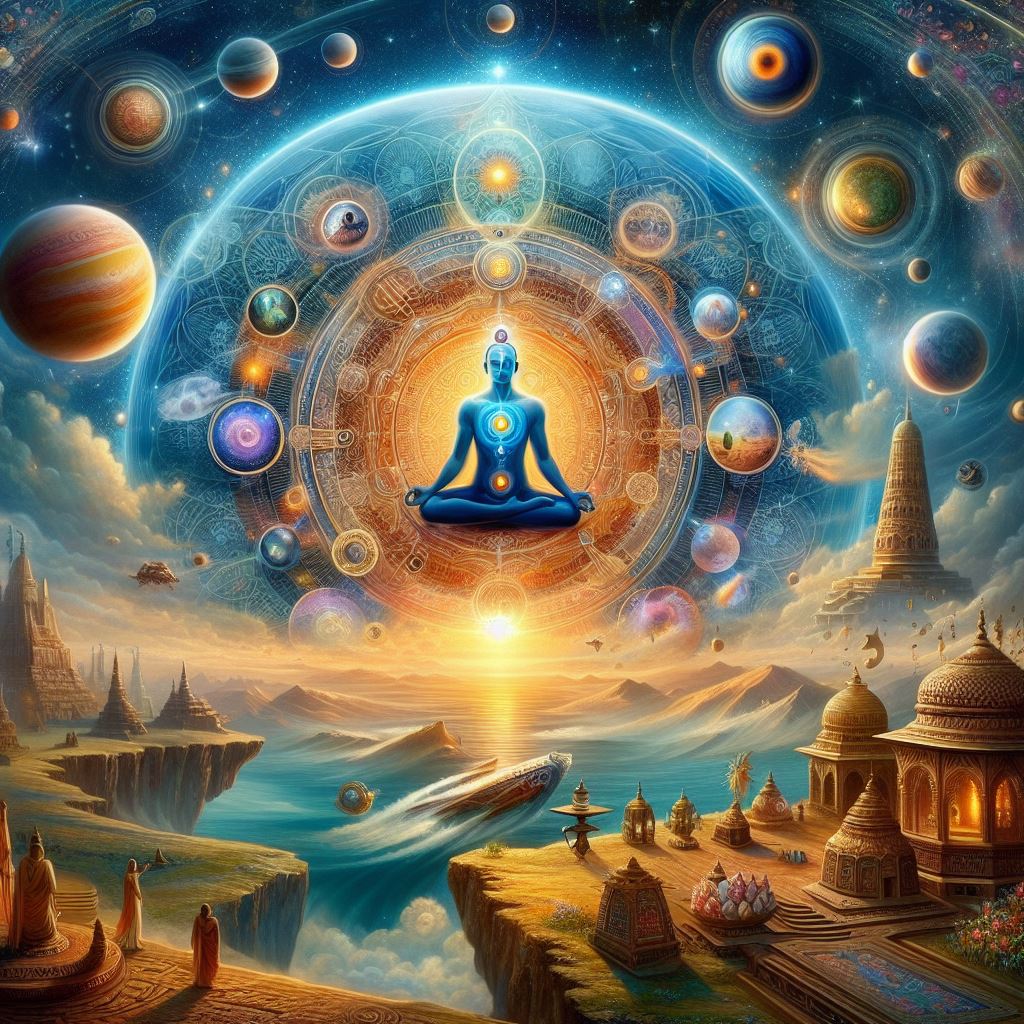
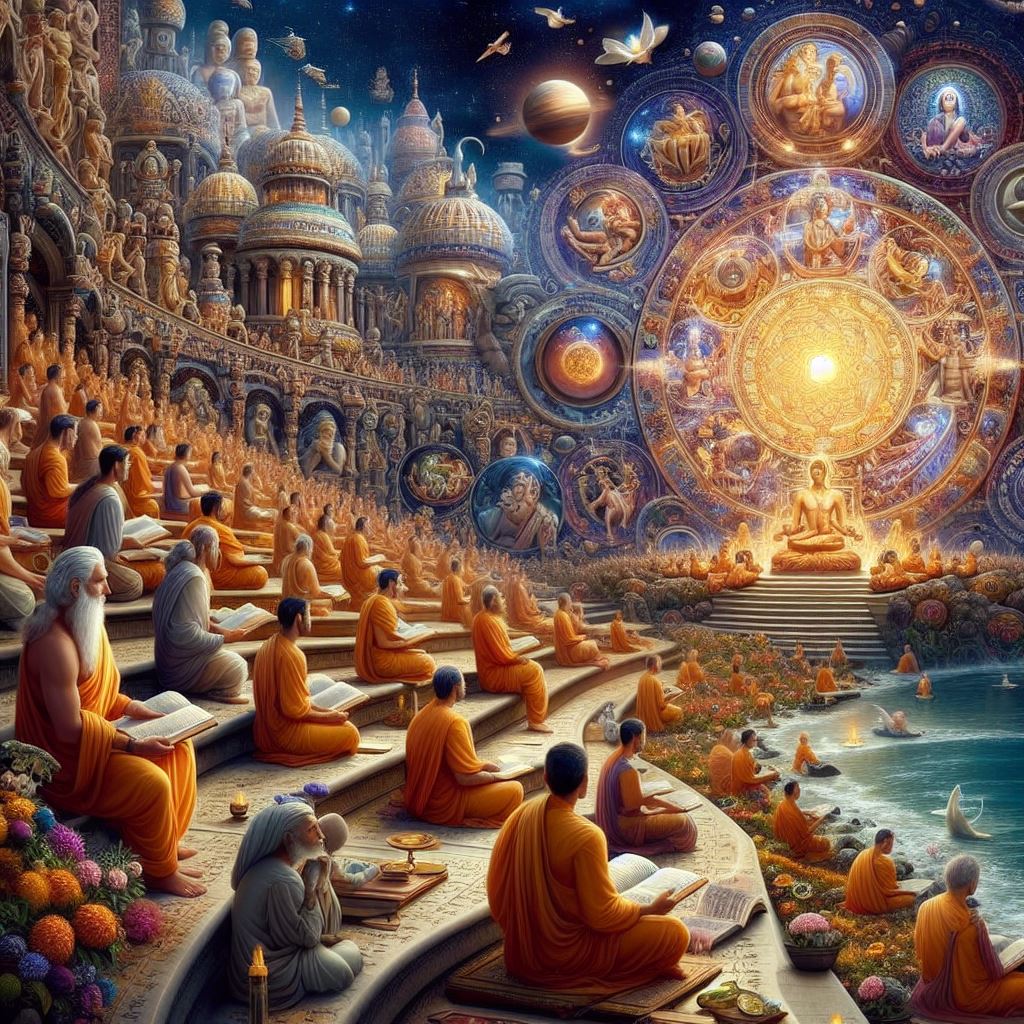
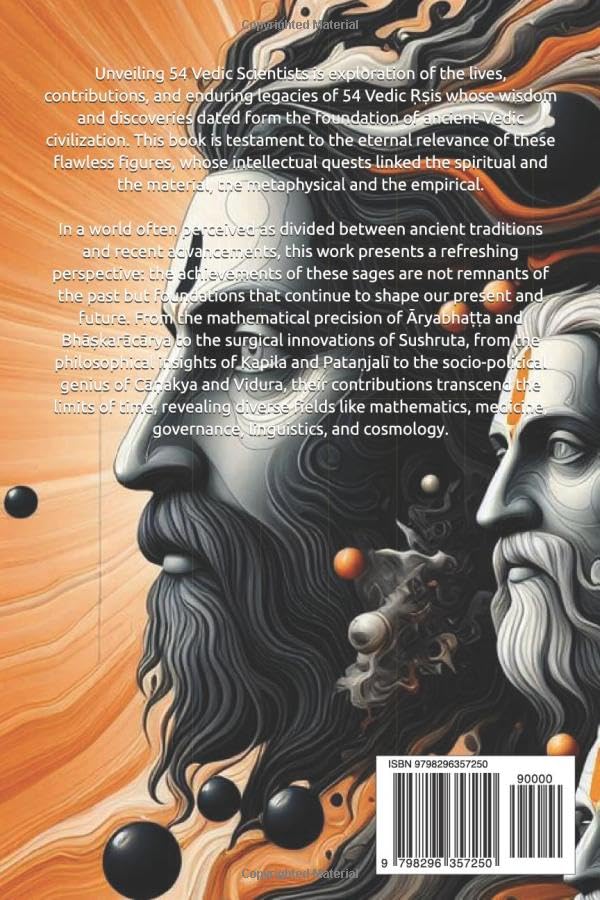
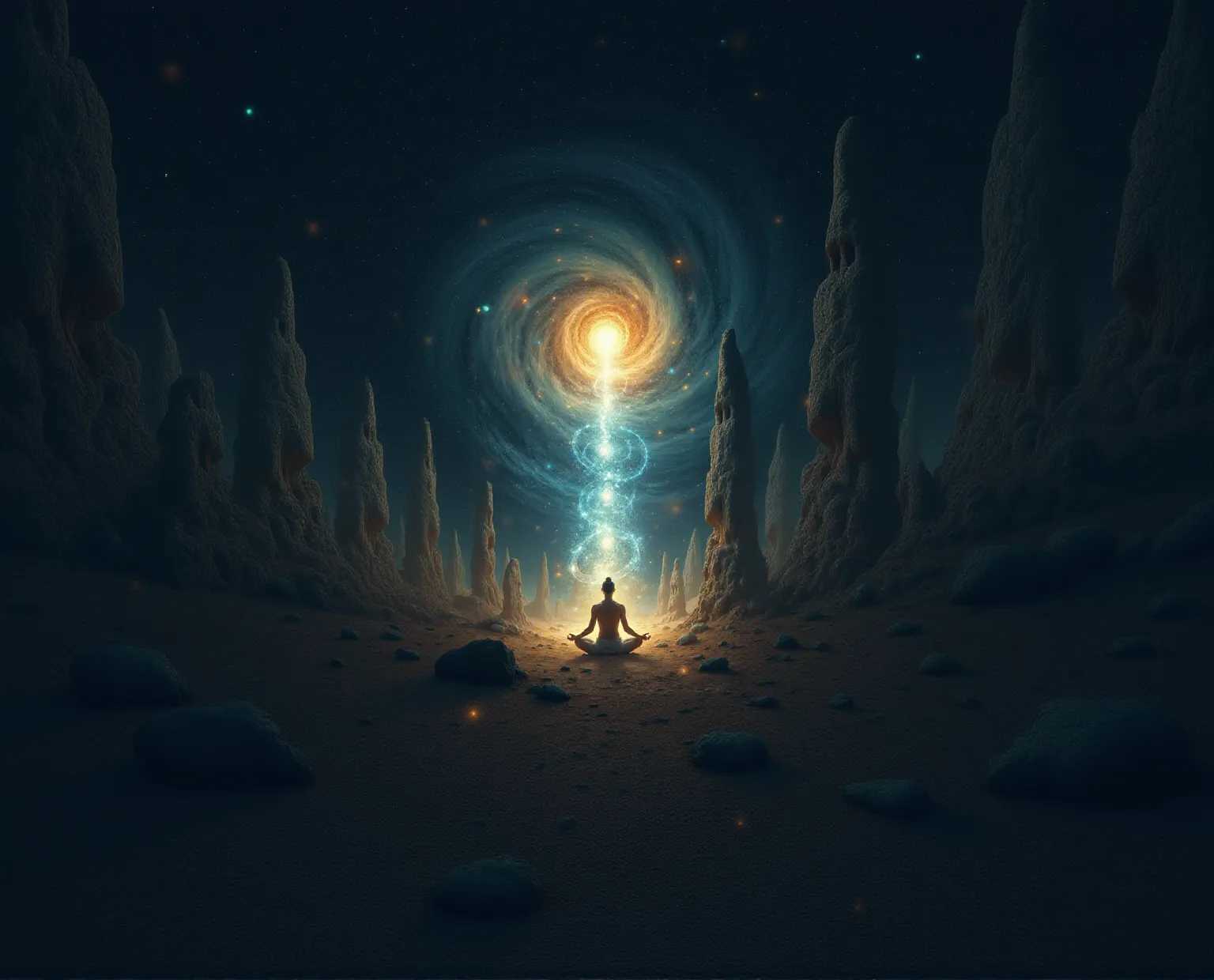
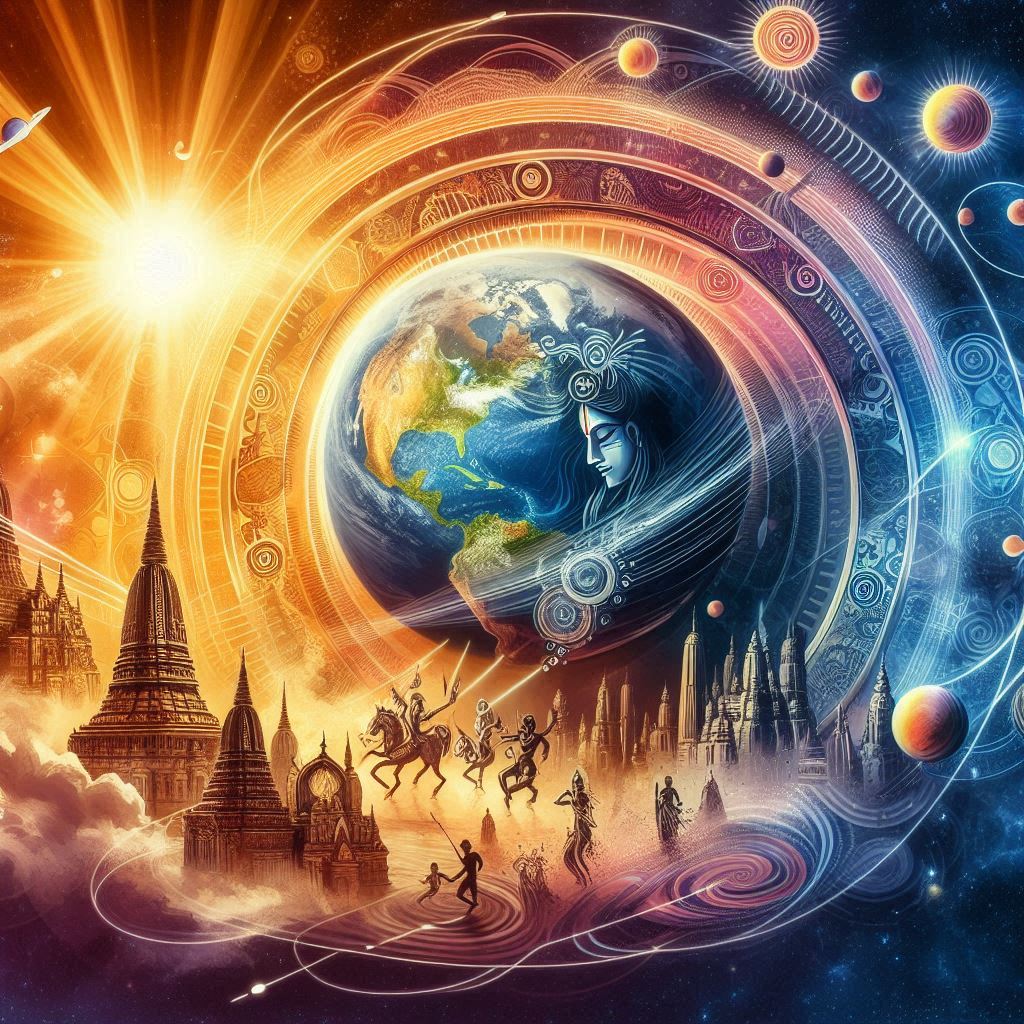
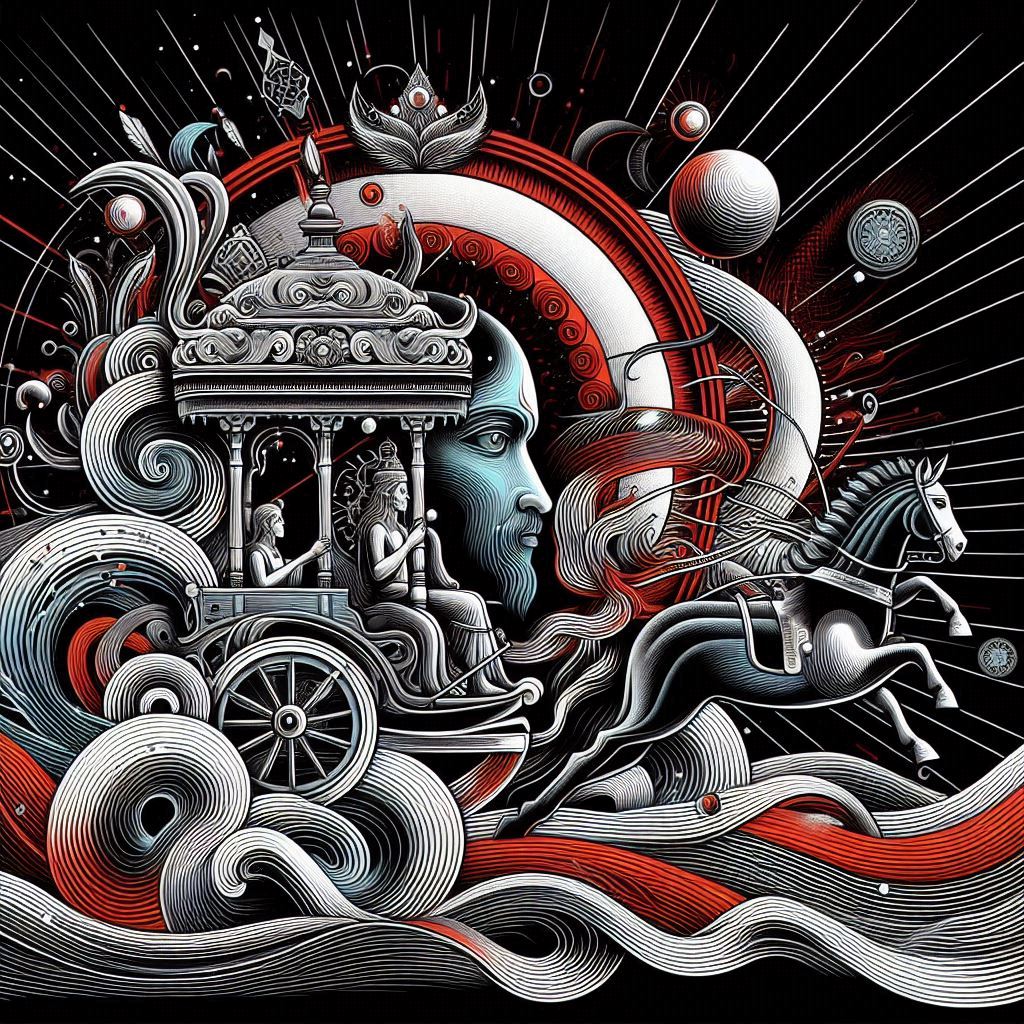
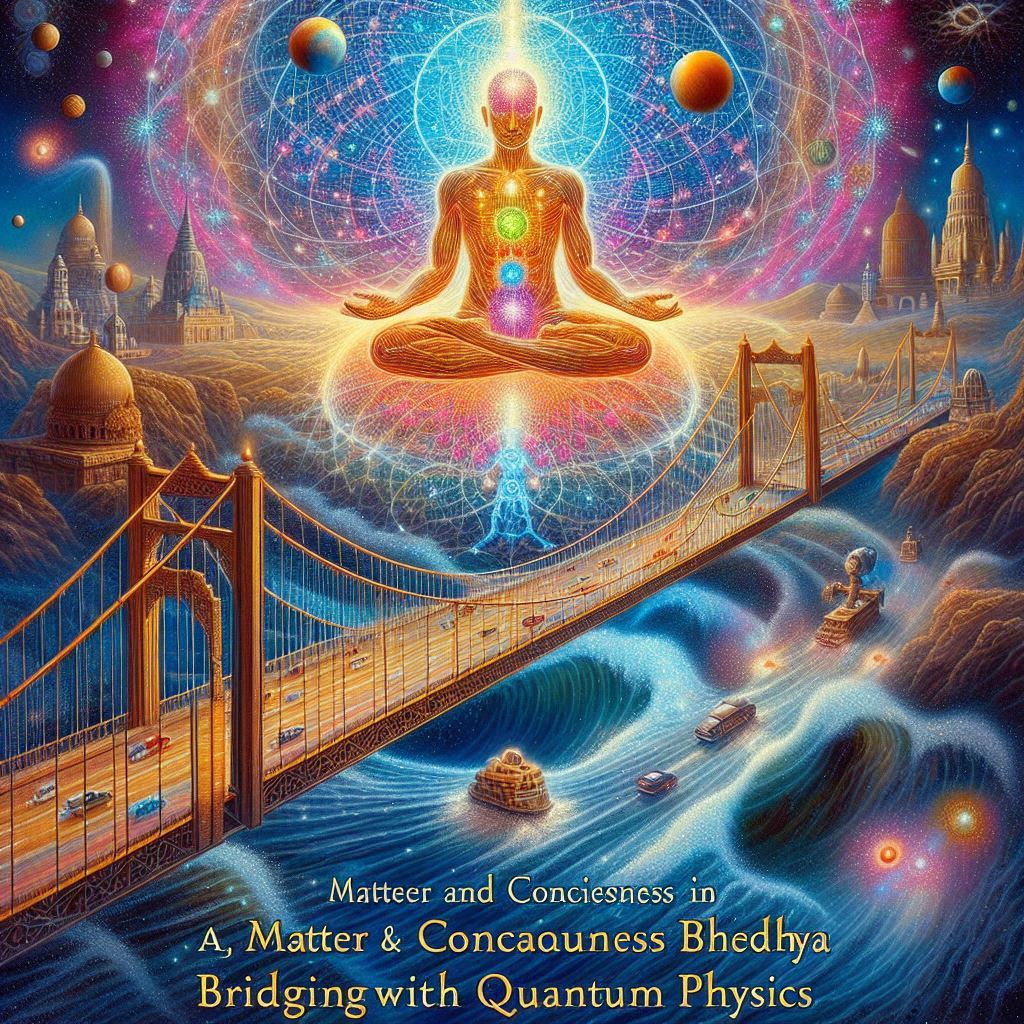
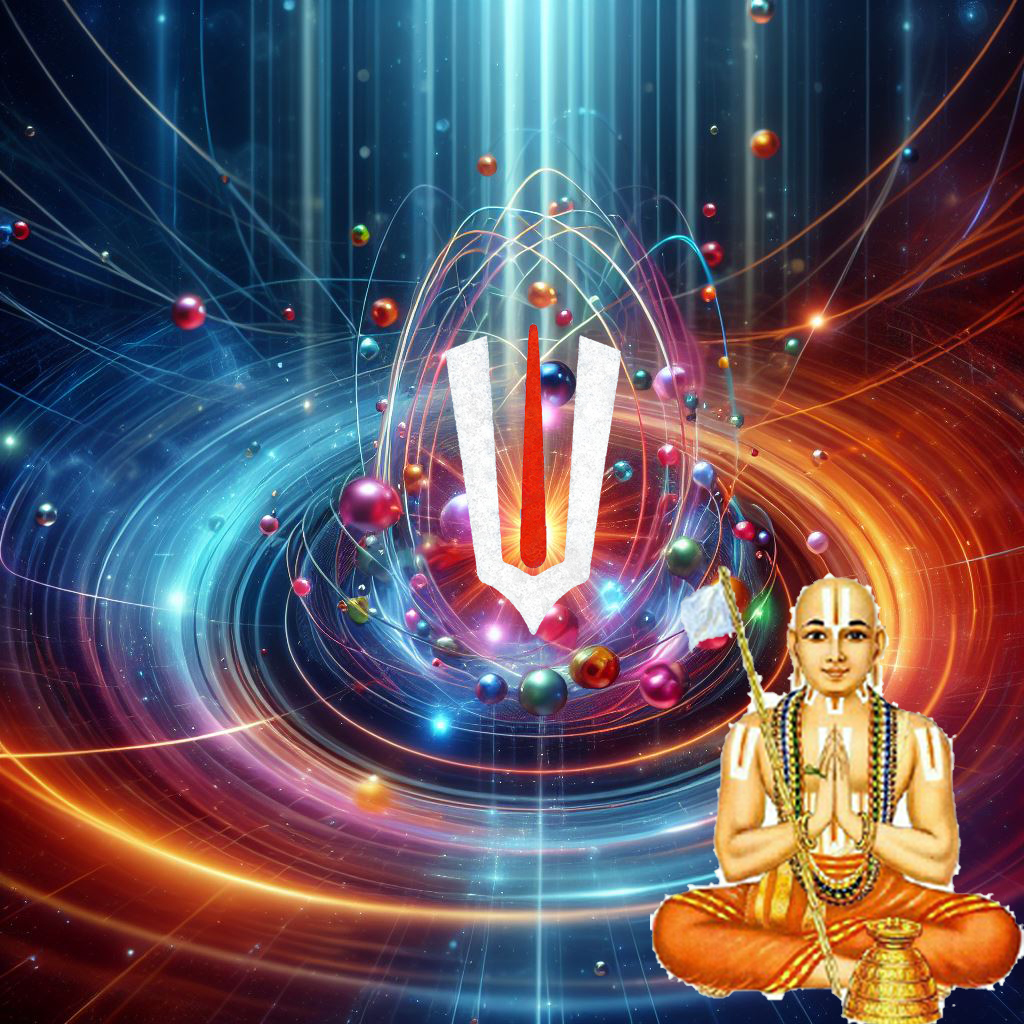
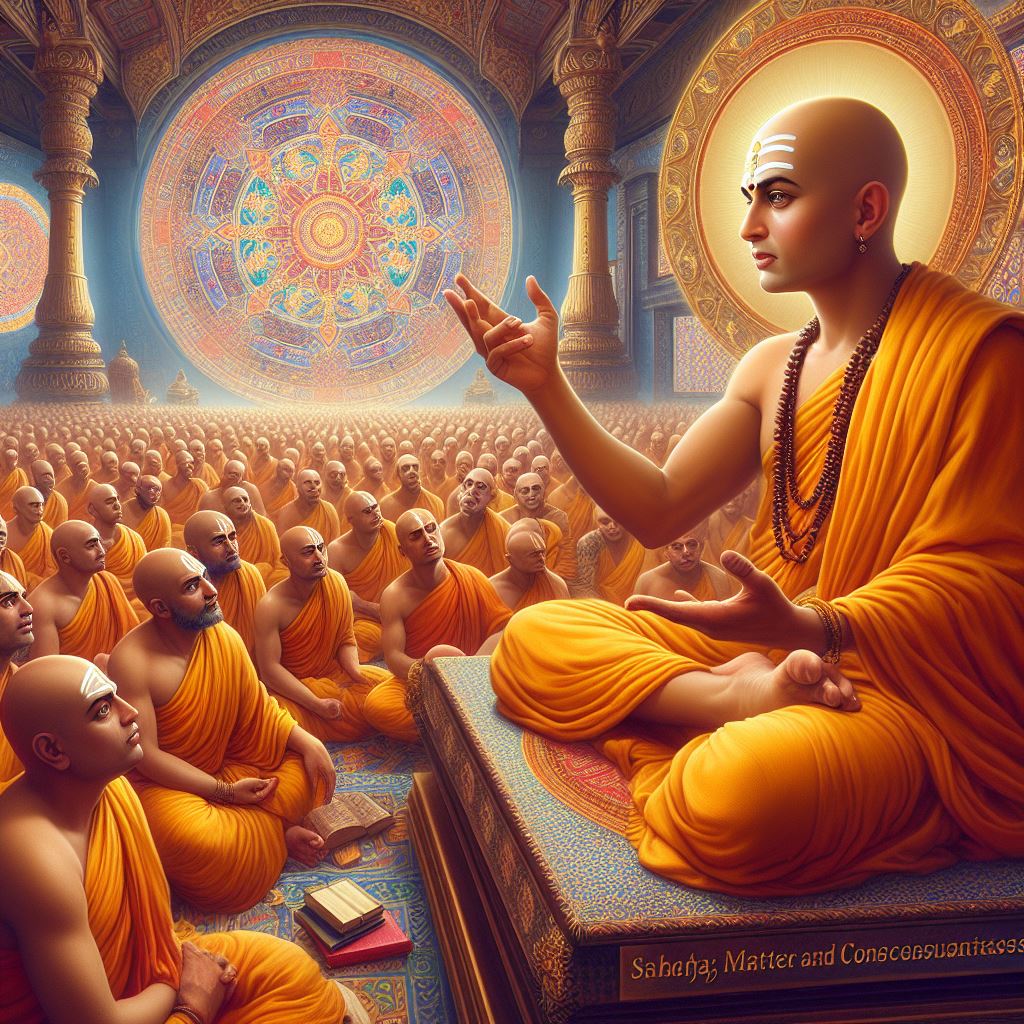

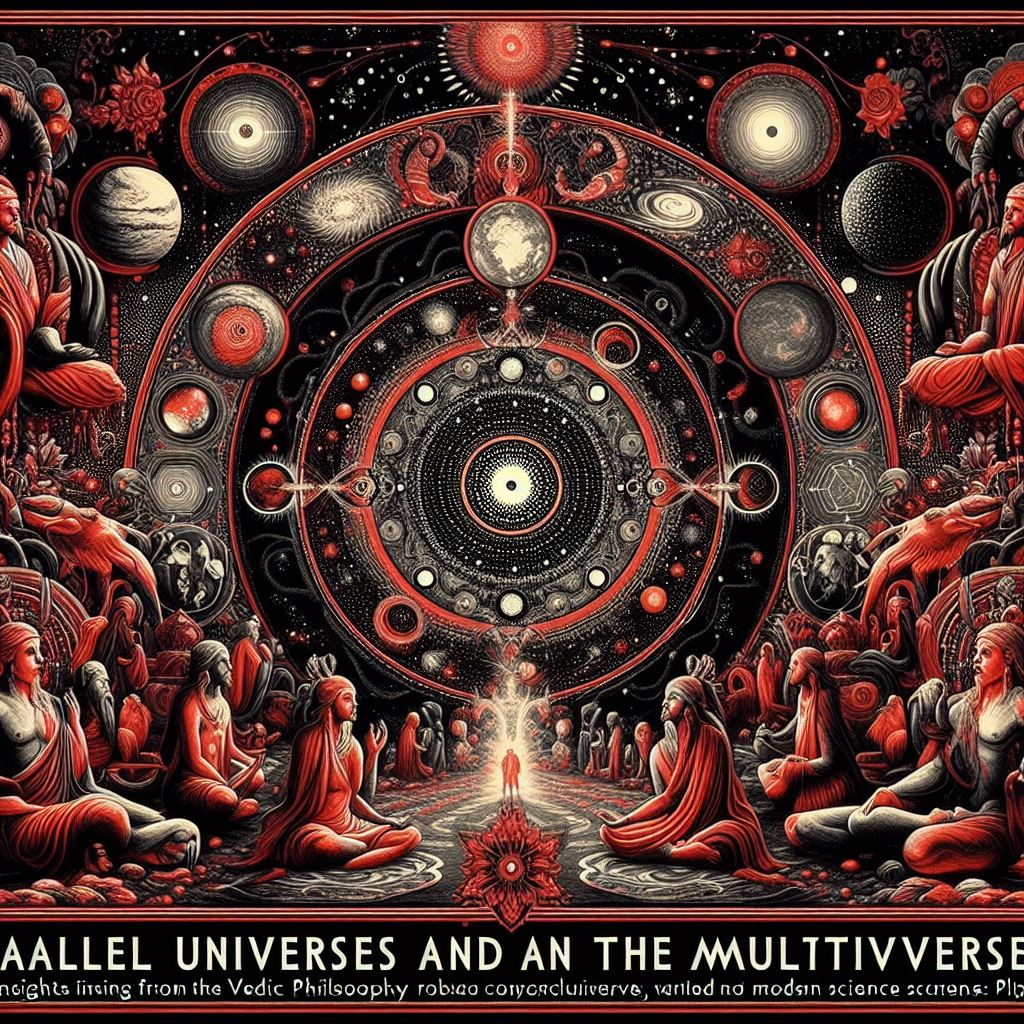
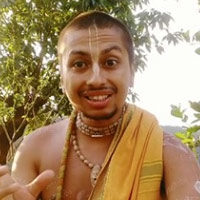
Origin of Science
The Psychospiritual Roots of Crime
Unveiling 54 Vedic Scientists
The Existence of the Soul: Exploring Neuroscience, Quantum Physics and Vedic Philosophy
Temporal Relativity in Vedic Literature: An Interdisciplinary Analysis of Time Dilation Narratives
Acharya Kaṇāda: The Ancient Sage Who Discovered the Atom
Evidence of Vedic Sanātana Hinduism as a Global Dharma
Perception of Quantum Gravity and Field Theory in the Vedas
String Theory as Mentioned in Veda
Sanskrit’s Role in Advancing AI: A Comprehensive Study
The Vedic Model of the Mind: A Contemporary Exploration
Vedic Contributions to Geometry: Unveiling the Origins of Mathematics
Matter and Consciousness in Achintya Bhedābheda: Bridging with Quantum Physics